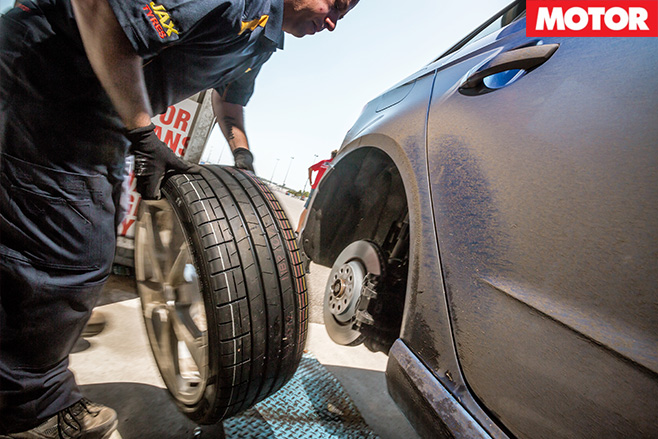
Compared to its 1959 Austin-Morris grandfather, the latest Mini is about as compact as an iPhone 6 Plus, but in contrast to most other cars lining my narrow, one-way street, this Mini Cooper Pepper hatch remains refreshingly small. That said, with a longer nose, thicker pillars and a steeper windscreen, the latest Mini definitely feels lardier and less airy than it once did.
Measuring 3821mm long, it’s 98mm longer than its predecessor, yet its wheelbase has grown by just 28mm, which goes to show how Latin the Mini’s pedestrian-friendly schnoz has become. All that crumple-zone real estate takes some getting used to, but with its regular parabola-lens headlights, at least this Cooper Pepper looks less like a startled cartoon character than the Cooper S with LEDs we tested back in June.
So what is a Cooper Pepper exactly? Well, it’s a $26,650 Cooper optioned with a $3000 Pepper package that includes black 16-inch Victory Spoke alloys wearing Hungarian-made Hankook 195/55R16 tyres (175/65R15s are standard), a larger 6.5-inch colour dashboard screen, dual-zone climate control, extended Bluetooth with music streaming and USB audio interface, Mini Excitement package with custom LED interior lighting, clear indicator lenses and fog lights at both ends.
In addition to three grand’s worth of spice, MINI-09 also includes a reversing camera ($470), black bonnet stripes ($200), no-cost black roof colouring and mirror caps, anthracite headlining ($300), piano-black interior finishes ($250), sun protection glazing ($400), and an anti-dazzle mirror ($200). That takes this six-speed manual Cooper Pepper’s RRP to $31,470, which seems like a fair wedge, but is more than a grand under what a dead-stock Mini Cooper cost when the R50 launched in 2002.
While the latest-generation Mini may not look as cute as its predecessors, it’s a vastly better car to drive. BMW’s thrummy new 100kW/220Nm 1.5-litre three-pot turbo is an ultra-flexible, peachy little thing, far superior to the slightly harsh 90kW/160Nm 1.6-litre ‘Prince’ four in the outgoing R56, and the peaky 85kW/149Nm 1.6-litre ‘Tritec’ four in the R50. Finally, here’s a Mini Cooper with the muscle to justify its name.
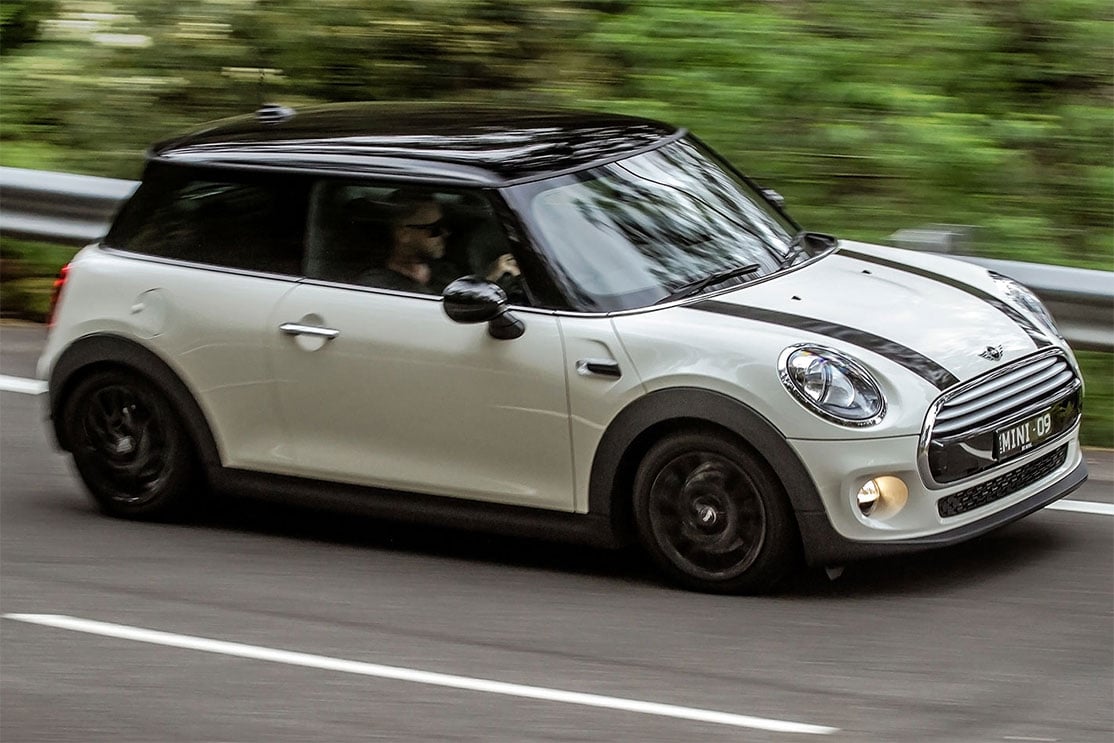
It’s incredibly tall-geared, though. At the turbo triple’s 6500rpm redline, first gear stretches to 65km/h, while second gear will hit an astounding 114km/h. Most small cars demand an upshift somewhere in the 90s, but not this leggy Mini. The Cooper manual’s claimed top speed is 210km/h, which translates to 5950rpm in fourth gear, yet at a comfortable 180km/h on an autobahn the engine would be ticking over at just 3600rpm in sixth. No wonder its official combined fuel figure is 4.7L/100km.
In the real world, this super-tall gearing takes some getting used to. After relishing the third-gear flexibility of my previous long-termer – a base Alfa Giulietta manual – the Mini’s legs are simply too long to tackle 90-degree turns or obstructive speed humps in third gear. Try it and the car almost stalls.
On the odd occasion, I drive at low speed in first because the gearing is so tall and the engine is so smooth. Yet Mini claims 0-100km/h in 7.9sec, which is 1.2sec faster than the previous Cooper and is achieved with just one reasonably slick shift to second. You have to be on your game with the clutch, though, because any delay in depressing it results in slightly jerky progress and notchy shift feel.
Travel between the floor and clutch engagement is quite short, but once you nail it, she’s an easy, breezy manual to get along with. And ditto the rest of the three-pot Mini. Decent front seat support (even though this pre-production Cooper lacks the centre-front armrest usually fitted to Pepper models), a useable back seat and improved luggage flexibility should make my Mini experience one to savour.
TANKS A LOT
A purely urban month, shared among Wheels contributors, all of whom must have deemed it their duty to ‘test’ the Mini’s performance while I was overseas on holidays, yielded a fairly poor fuel figure.
Arriving with 5748km on the clock, our Cooper manual covered another 806km during September, drinking 98RON at an average of 9.6L/100km. Given Mini’s urban claim of 5.9L/100km and an extra-urban figure of just 4.0L/100km, I thought the first month’s average would be about as bad as it was going to get. But not even close.
The next tank consisted of Thomas Wielecki and myself driving the Mini for its photoshoot on the Old Pacific Highway. Trip computer reset, it said we’d averaged 10.7L/100km for the day, which will surely be optimistic.
Can torque-surfing and short-shifting improve things?
UPDATE 1
‘It’s not me, it’s you’ scenario stymies the romance
There’s something not quite right about this relationship. On paper, the F56 Mini Cooper should be right at the top of anyone’s RSVP feed. It’s small and sporty, punchy and pointy, and seemingly perfect for urban manoeuvrability. It has all the engineering genes to produce a frigging brilliant little hatchback, yet when Robbo recently asked me how we were getting along, and I paused, he said, “You’re not in love with it.” And he was right.
What the three-pot Mini Cooper lacks, and the four-pot Cooper S delivers, is a genuine high. Something that could see us bond like chewing gum to hair. After nearly 2000 kays in my six-speed manual Cooper, I’m struggling to find something I truly, genuinely love. But here goes.
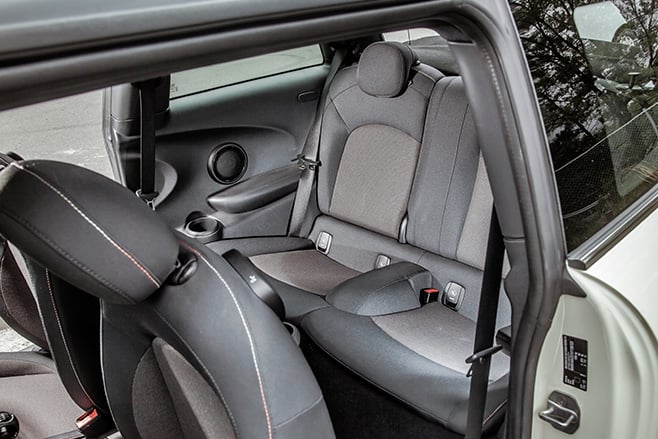
Contrary to what others think, I quite like the rear styling of the latest Mini, particularly its blobby tail-lights, and I’m always a sucker for frameless doors (until the seals stop sucking at highway speeds – ask any old Subaru owner). The Mini’s front cupholders are great for phones and keys and what not, while the one-litre Tupperware bottle I cart everywhere sits perfectly in the recess next to the handbrake. So practicality-wise it’s usefully inoffensive, even though its watered-down interior design means the new Mini is a little less Mini than it used to be.
It’s the dynamic aspect, though, that’s leaving me numb. Every now and then you get a taste of its delightful rear-end adjustment as it tucks into an urban corner, courtesy of super-keen steering and a neat leather wheel. But out on the open road, it simply doesn’t gel as well as it should.
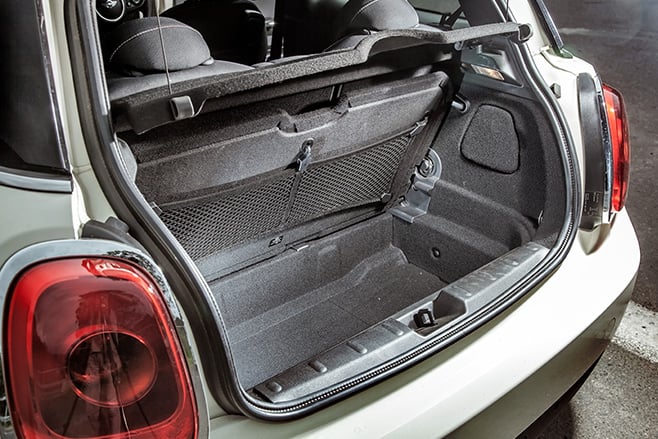
Even on its non-run-flat 195/55R16 Hankooks, the Mini Cooper’s urban ride is rubbish, yet at speed on a typically bumpy Aussie freeway, there’s virtually no improvement in its bump absorbency. If you like a jiggly, constantly jostling ride, then here’s your car! And the Mini’s steering is arguably too reactive on a twisty road, especially when it’s wet, because those Hankooks don’t quite keep up with the steering’s demands.
So, highs that aren’t satisfying enough, mixed with a ride-quality low that’s borderline hateful. If the Cooper sounded raspy and keen, like a three-pot Mini should, then I could forgive some of its flaws, but it doesn’t do that either. If only it were a Cooper S manual with adaptive dampers.
DOLLARS AND SENSE
A $500 grocery shop is a big ask, not least for your wallet, but with a visitor staying for a fortnight, the new Mini’s increased cargo flexibility had a chance to prove its worth. I laid copious amounts of mineral water and anything else that would fit beneath the dual-height adjustable boot floor, and wedged the rest as tight as possible in the upper level. A few bags had to ride shotgun with the rear-seat passenger, but the little Mini did an admirable job.
UPDATE 2
Minimal anxiety about this separation
Many, many years ago, Wheels Magazine ran an R50 Mini Cooper for six months – a red manual with a white roof and mirror caps, and 16-inch alloys. Cute as a button, yet frequently left alone in the carpark on weekends, the original New Mini was too patchy to tug at our heart strings. We couldn’t wait to see the back of it.
Thirteen years and two generations later, the Mini Cooper has morphed into a much more sophisticated, comfortable and liveable little hatch, yet much of its ‘retro’ styling has been diluted along the way. Instead of being a flab-free and crisply formed slice of re-imagined 60s charm, today’s Mini looks a bit like a gym junkie who’s turned puffy from too many steroids. Still, if you can handle the styling, you’re definitely getting more Mini for your money. Less money, as it turns out.
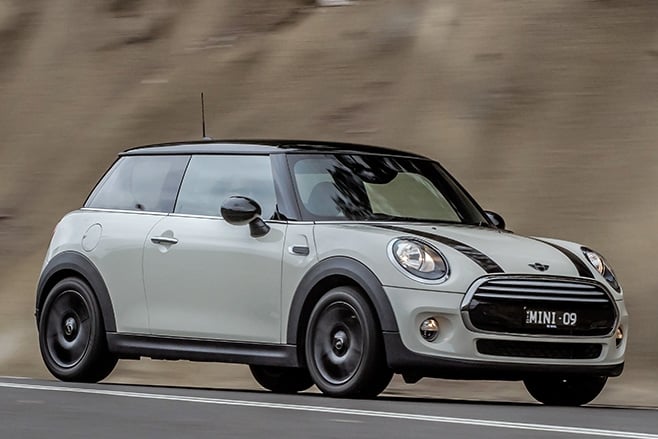
Yet, somehow, I failed to bond with this manual Mini Cooper Pepper. And much as it hurts to admit it, I blame the drivetrain.
On paper, a feisty 100kW/220Nm 1.5-litre three-pot turbo tied to a six-speed manual gearbox should be a recipe for proper small-car shenanigans. But Mini negates the fun factor by over-gearing the Cooper to a ridiculous level, while failing to capitalise on the potential acoustic thrills of a tuned triple. Impressively elastic as the Cooper’s engine is, it feels like it belongs in a much bigger car, not a sporty little hatch.
In low-speed urban commuting, particularly over the speed humps and deep gutters that predominate where I live, there are times when you need to blip back to first gear to prevent the Mini from stalling. And yet when darting through small roundabouts, third gear is too tall to take advantage of peak torque arriving at just 1250rpm. Could this ill-suited gearing be the reason for the Mini’s unexpected thirst?
After the first month’s 9.6L/100km average, I drove specifically for economy, surfing the engine’s torque curve and grabbing a taller gear wherever possible. Admittedly, the Mini Cooper sounds quite charming when thrumming along at low revs in a high gear, but it never delivered the leap in efficiency I expected.
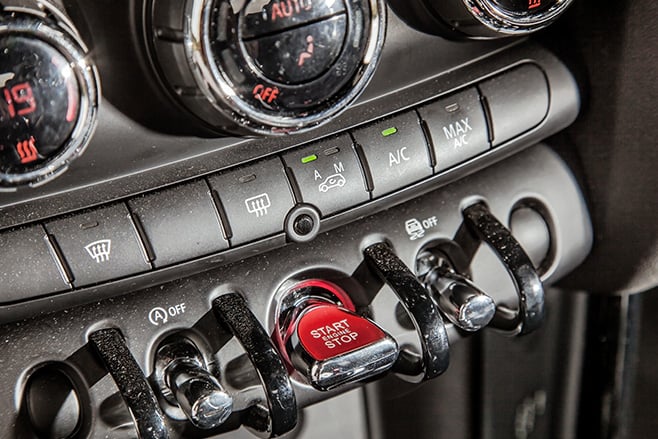
The Mini’s 7.8L/100km personal best included a 270km motorway trip, while its 11.5L/100km low point consisted of a spirited drive up the Old Pacific Highway to Brooklyn and plenty of urban commuting. Given its official combined figure is 4.7L/100km, my Cooper’s 9.3L/100km average doesn’t look too rosy. Nor does it compare well with my previous Alfa Giulietta’s 8.8L/100km, from a larger car with an engine whose roots can be traced back to 1983!
The Cooper’s notchy gearshift often made me wonder whether the six-speed auto would be a better bet, and even without optional run-flat tyres or big wheels, its roller-skate ride served as a spiritual reminder of the 1959 BMC original. The Hankook tyres didn’t work in harmony with the super-sharp steering, and the average quality of its stereo speakers meant it would be wise to carefully cherry-pick from Mini’s extensive options catalogue (see breakout).
Yet I didn’t dislike my cream Mini. Its frameless doors, comfortable seats, grippy steering wheel, wieldy size, parking sensors and optional reversing camera made it great for inner-city living. And the F56’s improved space efficiency was always appreciated when shoving passengers into the rear seat, or filling the boot with stuff.
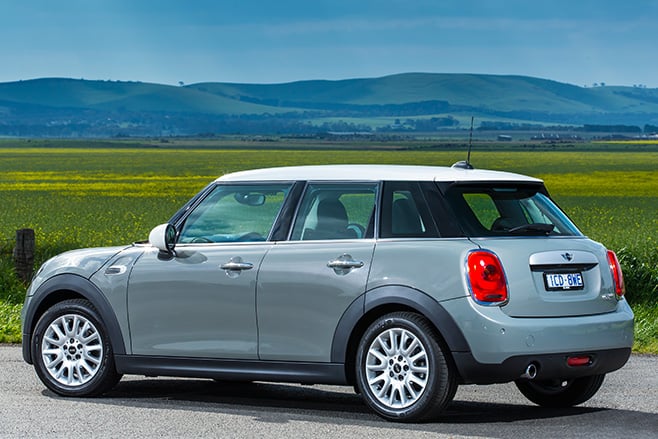
Like its predecessors, I think the F56 Mini gets better the higher up the chain you climb. The Cooper S is a significant step up for grunt, growl and gearshift feel, as well as ride quality if you stick with 17s and add adaptive dampers.
Given shorter gearing and a meatier induction note, the Cooper could easily be a poor man’s Cooper S. It’s just a pity Mini doesn’t see it that way.
OPTING IN
If I had to build my own Mini Cooper, I’d begin with Dynamic Damper Control ($700) and the mandatory Mini Driving Modes set-up (a collar around the gearstick that flicks between Eco, Mid and Sport modes – $250). That’s just under a grand for a big improvement in ride. I’d probably stick with the $3000 Pepper Pack, and I’d want this car’s black Victory Spoke 16s, as well as Harman Kardon hi-fi with 10 speakers ($1200). If the engine doesn’t make enough music, something else needs to!
BACK-DOOR POLICY
After returning my Cooper, I spent a few days in a Mini Cooper D five-door manual with adaptive dampers and Michelin Energy Saver 195/55R16 tyres. And really liked it! Admittedly, the stumpy (framed) doors look dorky and have a whiff of Austin A30 about them, but they’re more practical in tight carparks. The diesel’s torquey grunt is also much better suited to the gearing, and the urban ride on adaptive dampers and a longer wheelbase is comparatively bloody marvellous.

